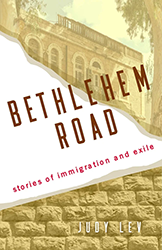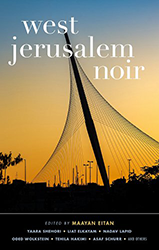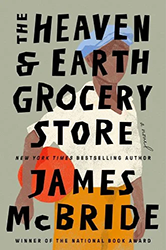While good biographies and historical narratives provide readers with a solid sense of a person or place, unanswered questions often remain. Leave it to curious and imaginative writers of historical fiction to fill in the gaps with possibilities. In Late Blossoms, an evocative collection of linked short stories, Merav Fima examines the lives of several Jewish female writers and visual artists who migrated to Jerusalem from Europe during the mid-twentieth century. Each story centers a different woman, and while we learn about the artists’ backgrounds and contributions, thanks to Fima’s thorough research, readers are also privy to a much richer exploration of these historical figures so important to the newly established State of Israel and its artistic and cultural development. “I have taken poetic license in constructing the encounters between them,” Fima writes of her approach to her characters, “in order to explore their most profound emotions and experiences.”
Explore characters’ emotions and experiences is exactly what Fima does, with Ticho House providing the link. Beginning in 1924, Anna and Albert Ticho hosted an ongoing literary salon in their home, inviting guests from Jerusalem’s artistic, academic, and intellectual communities. The titular story “Late Blossoms” introduces readers to painter Anne Ticho and to the deep meaning of creating art in the city. Having migrated from Vienna, Anne struggles to plant artistic roots in what she experiences as a barren landscape. A coin engraved with the image of olive branches proves to be the inspiration she needed. Anne’s own garden has olive trees, and she begins to fill her canvases with their images: “This was her first time signing in Hebrew on canvas. Here I am, a Jewish artist, painting in the holiest of cities.” There is something holy about creating art in Jerusalem — and about leaving countries of oppression and returning to an ancient homeland.
The discussions at the Ticho House salon were spirited and vibrant, and Fima captures the conflicts that arose amongst those who came to build lives in the fledgling nation. Else Lasker-Schuler was a celebrated visual artist and poet in her native Germany, but once the Nazis came to power, she becomes known as a “degenerate artist.” After escaping to Jerusalem, Else looks forward to attending the Ticho salon. Once there, though, she is criticized for writing in her native tongue.
Author Nelly Sachs experiences the same ridicule at the salon: “You continue to give voice to the victims rather than to our heroes, who established the State … How can you continue writing in German after the Germans destroyed our people?” chastises S. Y. Agnon, who, along with Sachs, was previously awarded a Nobel Prize. Through such imagined exchanges, Fima illustrates how cultural clashes played themselves out among the artists of the time. Those who chose not to erase their pasts were often denigrated; as women, living and working in patriarchal literary and art worlds, the characters faced additional hurdles.
Fima’s writing is lovely and lyrical. Late Blossoms is not only a tribute to the women whose artistic legacy continues to inform creatives living in Israel today; it is also a testament to the power of art to connect and heal people.
Diane Gottlieb is the editor of Awakenings: Stories of Body & Consciousness, the forthcoming Manna Songs: Stories of Jewish Culture & Heritage and the Prose/Creative Nonfiction Editor of Emerge Literary Journal. Her writing appears in Brevity, River Teeth, Witness, Florida Review, The Rumpus, Huffington Post, among many other lovely places.





